- Home
- Equipment Reviews
-
Amplification Digital Integrated Mono Block Preamplifier Phono Solid State Tube Analog Sources Cartridges Tape Tone Arms Turn Tables Digital Sources Digital Disc Players DACs Music Servers Streaming Music Services
-
Accessories Power Conditioners Room Accoustics Racks & Stands Audio Software Other iPod iPod Speakers iPod Headphones iPod Transports Headphones Over Ear On Ear In Ear Headphone Amplifier
-
- Audio News
- Event Reports
- California Audio Show, San Francisco
- Consumer Electronics Show
- T.H.E. Show
- Rocky Mountain Audio Fest
- AXPONA
- Salon Son & Image
- Hi-Fi Show & AV Expo
- High End
- Lone Star Audio Fest
- Capital Audio Fest
- TAVES - Toronto Audio Video Entertainment Show
- AK Fest
- Home Entertainment Show
- New York Audio $ AV Show
- Open House Events
- Spotlight
- Music
- The Columns
- 2024 California Audio Show
Latest Reviews & Audio News
-

PS Audio AirLens and DirectStream DAC Mk2 Review
(July 26, 2024) -

Audio Note UK Meishu Tonmeister 300B integrated amplifier, P3 Tonmeister stereo amplifier, M6 Phono Balanced Preamp Review
(July 12, 2024) -

Douglas Schroeder’s One Year Exploration of Digital Front End Systems
(June 25, 2024) -

Arya Audio Labs RevOpods Anti-Vibration Feet Review
(June 25, 2024) -

Lego Icons Retro Radio Review
(June 14, 2024) -
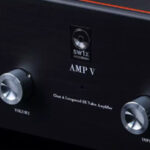
SW1X Audio Design AMP V “Titan” Special directly-heated triode integrated amplifier Review
(June 14, 2024) -
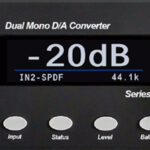
Bricasti Design Model 1 Series II D/A Converter and M5 Network Player Review
(May 24, 2024) -

Star Wars – The Empire Strikes Back – In Concert, May 2, 2024
(May 20, 2024) -
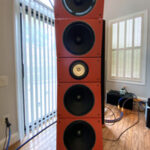
PureAudioProject Quintet15 with Voxativ AC-X field-coil open-baffle loudspeaker system Review
(May 20, 2024) -

Technics SU-R1000 reference stereo integrated amplifier Review
(May 20, 2024) -
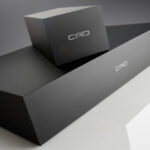
Computer Audio Design GC 1.1 & GC3.1 Ground Control external grounding systems Review
(May 20, 2024) -

Andy Grove of Audio Note UK on IO LTD
(March 23, 2024) -
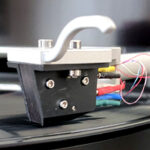
Audio Note UK IO Limited field-coil cartridge system Review
(May 20, 2024) -

EMM Labs MTRX monoblock Input Board Upgrade Review
(March 7, 2024) -

May 2018 Sibelius Violin Concerto concert video via Berliner Philharmoniker Digital Concert Hall app
(February 16, 2024)
-
Categories
-
Amplification Digital Integrated Mono Block Preamplifier Phono Solid State Tube Analog Sources Cartridges Tape Tone Arms Turn Tables Digital Sources Digital Disc Players DACs Music Servers Streaming Music Services
-
Accessories Power Conditioners Room Accoustics Racks & Stands Audio Software Other iPod iPod Speakers iPod Headphones iPod Transports Headphones Over Ear On Ear In Ear Headphone Amplifier
Site Sections
Copyright ©1996-2024 All Rights Reserved.
Popups Powered By : XYZScripts.com

Brendan Jan Walsh is anything but conventional. I met him here in Columbus, Ohio of all places at what was billed as a Classical Music Rave. On that alone I made a bee-line for the event, not knowing anything about him, but mindful of my past raving, this had to be experienced. Yes, there were lights, there were indeed cellists – the event was sponsored by CELLOHIO– and Brendan was indeed the DJ, a Mad Hatter of sorts.
Taking the opportunity to speak with Brendan briefly that night and connecting with him online, we now frequently message and I’ve gotten to know more about him, more about what makes him tick. For him it is about more than the music, and I see him as somewhat of a cultural revolutionary, taking his background in music, his learning from business school as tools to bridge the gap between the Arts and Business, the Arts and Consumers.
That’s a lot to take in, to digest, to fully understand. To get down to the matter I will be interviewing Brendan to find the answers to the questions and more? BJW’s alter ego Mr Van Walsh (MVW), might be making an appearance so don’t be alarmed. Consider yourself fortunate.
DB: Who are you? I’ve gotten to know you as Brendan Jan Walsh and Mr Van Walsh. Why the two personas?
BJW: I’m really just a guy with a moustache who believes that the world can always be more beautiful and who will do as much as possible to contribute to that. Currently my e-mail footer could read: cellist / composer / conductor / DJ / entrepreneur / lecturer / MC / moderator / presenter / producer / strategy consultant / (recent) vlogger.
The idea of creating an artistic alter-ego arose when I noticed everybody was getting rather confused with all the things I do. So, I separated my activities into two worlds: offstage and onstage. Offstage, I can be rather serious and professional. Onstage, I let Mr Van Walsh out. This way I get to be king AND jester. By visibly switching hats, I hope to help manage expectations. He’s also a bit of a parody of myself, so I don’t fall in the trap of taking myself too seriously.
Basically, I’m a professional madman who tries to keep both sides of the brain active and connected. In my mind, I’m just me. But who is ‘me’?
I’m one of two sons of international parents. My mother is a Belgian violin pedagogue, my father a British computer engineer. I was born in England and raised in Belgium. I grew up speaking multiple languages and had the luxury of inheriting the analytical strategic left-side of my father’s ‘Walsh’ brain and the crazy creative right-side of my mother’s ‘Van Bouwel’ brain.
I had a colorful childhood. When I was 8 years old, I wanted to become king… I imagined that a king had to be good at everything and would do good for everybody around him, thus making everybody happy. I thought I’d be pretty good at it. I remember classmates laughing at me for such a dream and my reaction being: just you wait!
In my youth I also spent a lot of time performing. I have always enjoyed the spotlight, making people laugh and cry, wonder and ponder. When I told my mother at the age of 16 that I wanted to become a musician, she reacted: “You’ve got a good brain, please use it. Don’t go into music. It’s a small world.” It left me rather confused, but stubbornly looked for a solution and I was happy to learn that I could combine music and languages at the University of Huddersfield in the UK.
Continuing my ambitions to master the language of music, I was accepted at a conservatoire in the Netherlands. And I hated it! I simply could not adapt to the system that was being imposed rather rigorously onto the cello class. They were training me to be an orchestral musician, whilst all I wanted was to develop my own sound. Except I couldn’t formulate it so clearly at that time.
I felt unhappy and lost, until I met a brilliant man, academic and conductor, the late Christopher Hogwood. We developed a friendship and he suggested that I should consider management. My initial reaction was: I’m not a failed musician just yet! But my mind was triggered and to my own surprise I was accepted for a MSc at one of Europe’s top business schools.
Mad Hatter in Plaid, Antwerp, Belgium ©Tom de Visscher
DB: From musician to Business School? How did that come about? Was there something missing in the music experience for you?
BJW: Besides my frustration of not being able or allowed to musically express myself, I was also troubled by the arts world’s dependency on subsidy and support. In my view, an artist has the responsibility of being a mirror of society. I saw that most of my artistic friends were practically begging for money within a system that was taking in more people than it could provide for. But should one provide for artists? I started to think that every artist should be an entrepreneur. We live in a market economy, but in the world of arts nobody seemed to be able to explain how they do it ‘out in the real world’.
So I temporarily sold my artistic soul to learn how the world of money works. I sponged up knowledge and experience by working in finance for a bank in the City of London, in marketing for L’Oreal HQ in Paris, in sales for a software company, HR for IBM and management consulting at airports.
Then the financial crisis hit and I took that as my cue to return to the cultural sector.
DB: What was the turning point for you as a business executive? Or did particular clients you worked with spur on this cultural revolution of yours?
BJW: Well, I always wanted to go back into the arts. It did however happen sooner than I anticipated. (I had given myself 10 years, it turned out to be 6). But I must give credit to the president of L’Oréal Professionel at the time, who predicted that I would return to the world of music and connect the arts to the business world.
And I did. In 2009 I re-entered the arts world full of conviction and energy, wanting to share my new knowledge and network and build that bridge between art and business.
I ran too fast. I upset quite a few of people, mostly in the arts. I quickly came to the conclusion that it was too early to connect both worlds, simply because they really did speak a different language. Instead of translating, I invested in transferring business and entrepreneurship skills in the arts through teaching and consulting.
Until I got fed up of writing plans for other people and hoping they would execute them. One day a smart student smugly asked: all this you’re teaching us, how do we know it works? He had a very good point, I thought, and soon afterwards I started practicing much more vigorously what I preached. It coincided with the development of the very first Classical Music Rave in Amsterdam.